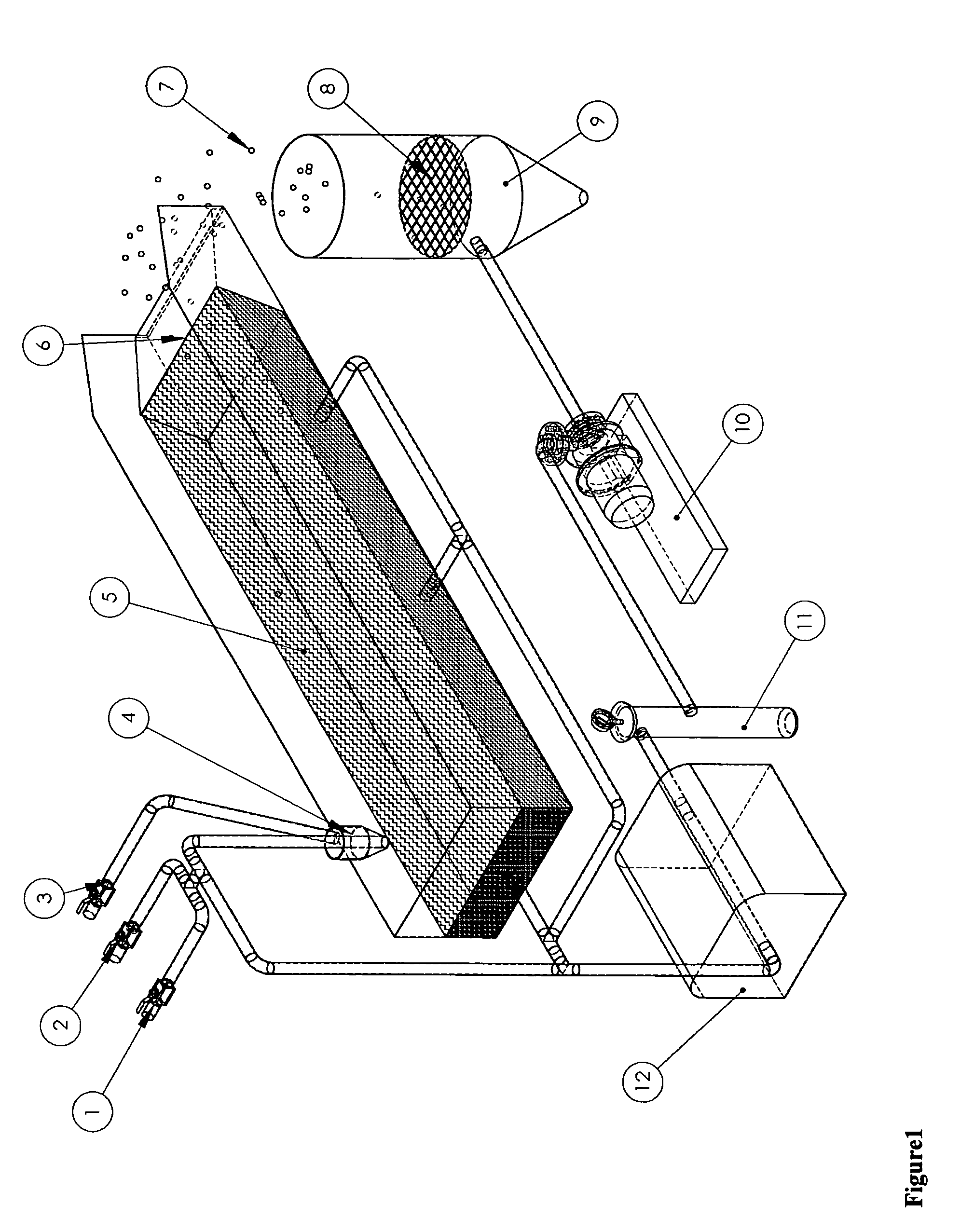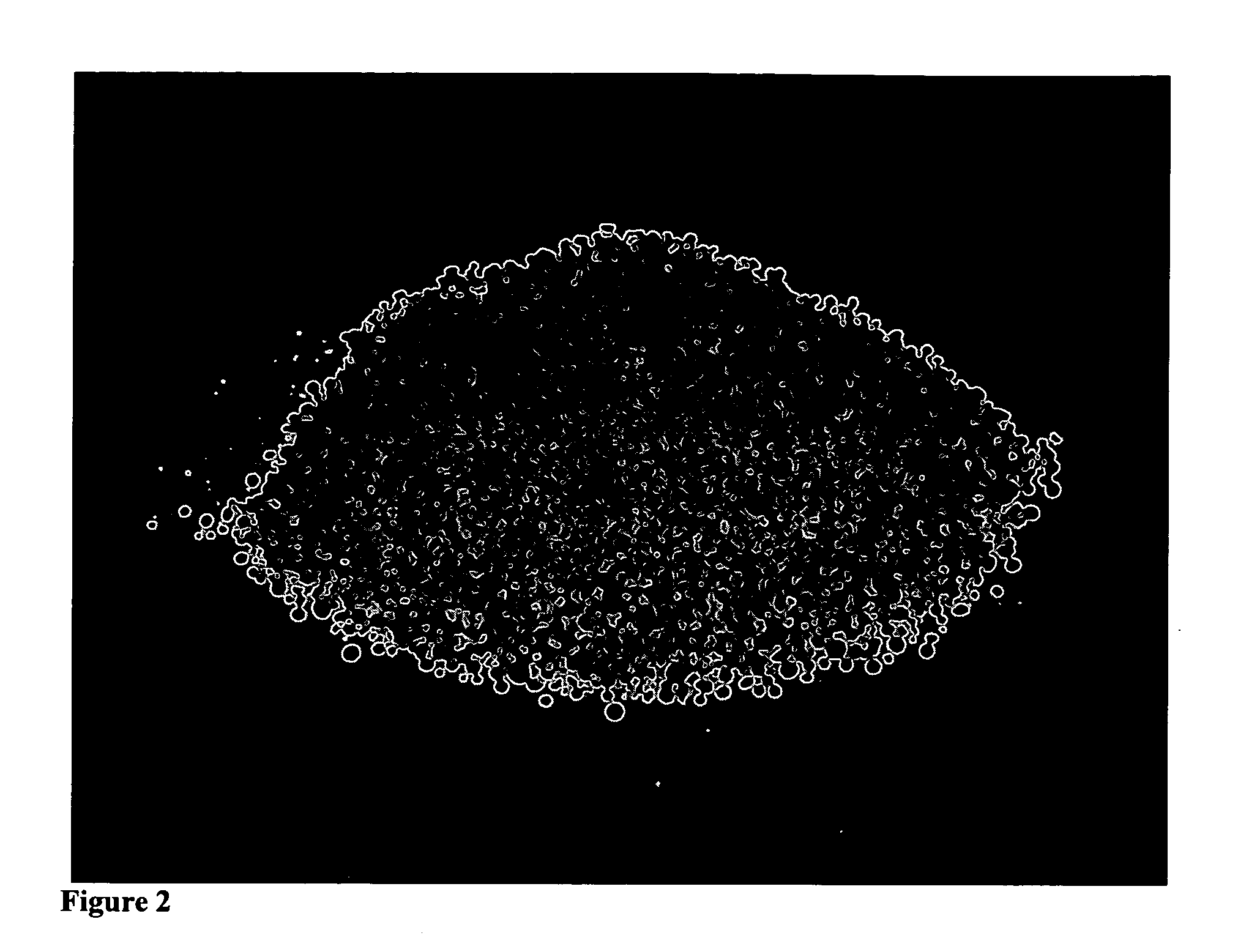Methods for manufacture of aerogels
a manufacturing method and technology for aerogels, applied in the direction of silicon oxides, silicon compounds, other chemical processes, etc., can solve the problems of difficult obtaining a narrow size distribution, limited in the size of the resulting beads, and the formation of silicon aerogel particles, etc., to achieve the production capacity of equipment, easy maintenance and replacement of parts. , the effect of easy maintenan
- Summary
- Abstract
- Description
- Claims
- Application Information
AI Technical Summary
Benefits of technology
Problems solved by technology
Method used
Image
Examples
example 1
[0046] This example illustrates the formation of silica aerogel beads opacified with 5 weight percent loadings of carbon black. 7.07 kg of silica precursor was mixed with 9.78 kg ethanol and 1.57 kg for 1 hour at ambient conditions. It is then charged into a pressure container as a hydrolyzed sol. 6.75 kg of 28-30% aqueous base was mixed with 1.98 kg of ethanol and 130 Alcoblack® for 10 minutes. It is then charged into another pressure container as catalyst. The sol and catalyst were mixed together in a 2 to 1 ratio by a nozzle and dropped into the flowing silicone oil. A stream of compressed air was injected along the sol droplets, leading to a sol spray before entering the silicone oil. The resulting sol micro droplets flow slowly with the silicone oil toward the end of the vessel and downward into the collection bag. Collected beads can be removed periodically. After removing the excess amount of silicone oil, the bags of gel beads are sent through a silylation step and dried by ...
example 2
[0047] This example illustrates the formation of 1 to 3 mm size PMMA / silica aerogel beads with 15% loading of PMMA. 0.90 g of ter-butyl peroxy-2-ethyl hexanoate was added to a mixture of 40 g of MMA, 24.8 g of TMSPM and 18.3 g of methanol, following by vigorous stirring at 70 to 80° C. for 0.5 hr Trimethoxysilyl containing polymethacrylate oligomer was obtained as a viscous liquid in concentrated ethanol solution. 41.16 g trimethysilyl containing polymethacrylate oligomer was mixed with 829.6 g of Silica precursor, 207.9 g of ethanol, 93.8 g of water and 56.1 g of 0.1M aqueous HCl for 1 hour at ambient conditions. It is then charged into a pressure container as hydrolyzed sol. 34.7 g of 28-30% aqueous base was mixed with 261.3 g of ethanol and 330.7 g of water for 10 minutes. It is then charged into another pressure container as catalyst. The sol and catalyst were mixed together in a 2 to 1 ratio by a nozzle and dropped into the flowing silicone oil. The resulting sol droplets flow ...
PUM
| Property | Measurement | Unit |
|---|---|---|
| density | aaaaa | aaaaa |
| density | aaaaa | aaaaa |
| density | aaaaa | aaaaa |
Abstract
Description
Claims
Application Information
 Login to View More
Login to View More - R&D
- Intellectual Property
- Life Sciences
- Materials
- Tech Scout
- Unparalleled Data Quality
- Higher Quality Content
- 60% Fewer Hallucinations
Browse by: Latest US Patents, China's latest patents, Technical Efficacy Thesaurus, Application Domain, Technology Topic, Popular Technical Reports.
© 2025 PatSnap. All rights reserved.Legal|Privacy policy|Modern Slavery Act Transparency Statement|Sitemap|About US| Contact US: help@patsnap.com



